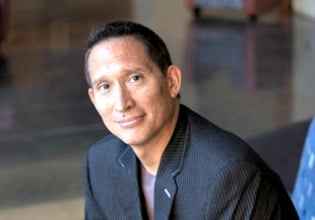You have /5 articles left.
Sign up for a free account or log in.
Below is an email response that José Bowen, president of Goucher College in Baltimore, sent me in response to my “Inside Digital Learning” post “In Defense of Lecture Capture.” In that piece, I agree with Bowen that lecture capture, like all educational technologies, can be terrible. But that does not mean that lecture capture and other technologies are all bad for learning. I wrote that lecture capture is, after all, just a tool, and that all tools can be used poorly or well.
Bowen graciously indicated that I could publish his response to my July 12 piece -- and I'm happy to do so.
Beyond the specifics of this (very interesting) discussion, to me the real story is the engagement and intellectual energy that Bowen brings to our higher ed community. Really, how cool is it that a college president -- who is among the busiest people on the planet -- will take the time to engage in a public conversation?
Here is what Bowen had to say. -- Josh
 José Bowen: That is very, very well done. Congratulations. And thanks for being so fair and complimentary.
José Bowen: That is very, very well done. Congratulations. And thanks for being so fair and complimentary.
I think we agree about most of this. Yes, it is just a new shiny object and can be done badly. I tend to think that most folks will use it to capture full hours, and as you have me say -- that does allow students to go back and watch particular bits. That is a benefit. The data is clear that students do not watch recorded videos the way they watch live (this is true for TV and music too, of course). I think that is a good attribute of the tech, but does it justify the expense? You ask the right question -- how can we better use this technology?
I like your idea of 20-minute lectures and then not recording the activities. I can see the benefit of that (and your commenter is correct -- that allows for ADA accommodation). I would still argue, however, that live video capture is a bit like live theater or TV. It captures something, but with a little more effort there is a lot of gain. I guess the place for further research and discussion is exactly how much more work and for how much gain?
My proposal -- worked out in more detail in Chapter 3 of Teaching Naked Techniques (the new book I wrote with C. Edward Watson) -- is that creating your own digital content in a studio allows a teacher to deal directly with different student experiences. So my example is that I can now give dozens of different examples and analogies and label these choices -- or mini video -- for students. So here is me summarizing the material in four or 12 different ways -- you pick one. So indeed, that might take me two hours instead of 20 minutes of live, but I probably prepared for those 20 minutes and tried to get the best 20 minutes.
Suppose I gave you the choice of recording four 10-minute takes for different types of students? I don’t know. Maybe instead of giving that 20-minute mini lecture, students pick the analogy they like best and follow only that path in class?
We also agree that a great lecture can be a great thing, but really, how many of them are great and how many need to be given again when they were not that great? What are the ways we can make that in-class experience more compelling?
But in any case, you have taken this seriously and you are a model of how scholarly discourse is supposed to work. You have demonstrated the flaws in my argument and suggested solutions and new lines of research. Bravo!
José
José Antonio Bowen, Ph.D., FRSA, President
Goucher College

